By J.I.B. Jones
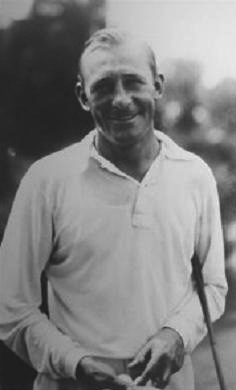
George Von Elm - photo by Scotty Chisholm
|
George Von Elm was born in Utah in 1901. He learned golf as a caddie at the old Salt Lake Country Club under professionals Louis Berrien and Willie Lock.
George won the first of his three Utah State Amateur titles (1917, 1920, 1921) at 16 years of age. In the autumn of 1923 Von Elm returned from his ban and entered the U.S. Amateur Championship at Flossmoor, only to be beaten in the third round by Francis Ouimet.
Late in 1923 George Von Elm moved to Los Angeles and joined the Rancho Golf Club under the tutelage of resident pro Arthur Clarkson. In early 1924 George lowered Clarkson's course record by 4 strokes on the then very difficult Herbert Fowler layout, shooting an historic 64. Von Elm's course record stood the test of time until the golf course was re-designed by William Johnson, Billy Bell, and George himself in 1947.  Willie Hunter & George Von Elm at Rancho Throughout 1924, George was paired with Rancho Golf Club Secretary and former British Amateur Champion Willie Hunter, who was also banned from amateur competition by the USGA in 1922, and who had coincidentally also beaten Bobby Jones in the 1921 US Amateur. George and Willie played in numerous exhibition matches against the hottest touring professional and amateur golfer's in the country, and teamed to form the unbeatable lead duo of the Rancho Golf Club in the SCGA Inter Club team play matches. George's record in 1924 includes winning the Low Medal competition at the California State Open played at Los Angeles Country Club; the Flintridge CC Invitational; the Los Angeles City Championship on the Harding course at Griffith Park (returning the cup later because he couldn't play in the weekend matches); at Rancho Golf Club where he won the Rancho Invitational; again at LACC where he won Low Medal honors in their Invitational; the Wilshire Invitational and the Brentwood Invitational. In October, at the Merion Cricket Club in Pennsylvania, George was defeated in the final match of the 1924 U.S. Amateur Championship by Bobby Jones, who beat George 9 and 8, and went on to win the first of his five U.S. Amateur titles. Although most of Von Elm's approach shots were pin seekers, the Atlanta lad's unbeatable putter was running white hot in the morning round, and couldn't be matched as a gallery of 5,000 fans witnessed the contest.  In 1925, George won the Northern California Amateur Championship title; the Southern California Amateur Championship at Los Angeles County Club by the largest margin of victory in SCGA match play history, 12 and 10 over Norm Macbeth, a record that remains today; and the La Cumbre Invitational tournament. In September, he traveled back east only to lose again to Bobby Jones, 7 and 6 in a semi-final match for the 1925 U.S. Amateur Championship, played at Oakmont CC. Bobby Jones claimed his second title in a row. On the local level, George won the California Amateur at Pebble Beach & Del Monte; the Rancho Invitational; and the Southern California Open that included Walter Hagen and other professional golfers.
His sizzling play continued in 1926. With a near miss of winning the title, he settled for second place at the inaugural Los Angeles Open organized by the Los Angeles Athletic Club and held at LACC. He helped Rancho win the SCGA team play title and individually won the Rancho Invitational again. 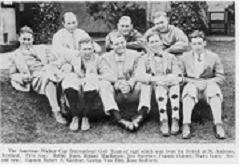 He finished third at the British Open and won handily as a member of the victorious U.S. Walker Cup Team competition played at Royal St. George's. Upon returning to the United States, George was not to be denied on his third attempt to beat Bobby Jones, 2 and 1 to capture the 1926 U.S. Amateur Championship title at Baltusrol Golf Club in New Jersey.
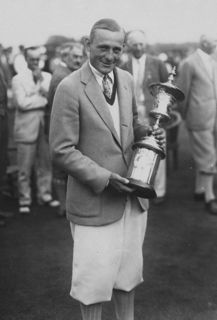 Heralded as one of the great sports upsets in 1926, Rancho Golf Club members and the entire City put on a show to honor the great Rancho, California and National Champion upon his return to the City of Angels. Funds were collected by club members to present George with a brand new car in recognition of his great achievement. George's hot putter could not be stopped in 1927. As captain of Rancho, he led the club to victory in the SCGA team play finals over Lakeside CC with the help of a young Howard Hughes and close friend Leon Keller to take home the inaugural Peter Cooper Bryce Cup. 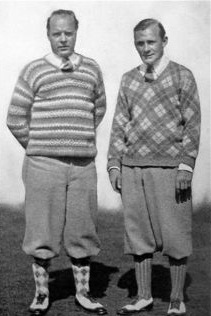 He went on to beat Dr Paul Hunter and win the Southern California Amateur Championship title for the third time and in September, and was crowned the Medal Winner of the 1927 California Amateur Championship. Von Elm's winning ways continued through the end of the 1920's, winning the prestigious Golden Mashie and Agua Caliente tournaments. He was also invited to play in various exhibitions matches against Walter Hagen, Bobby Jones, Tommy Armour and other legends of the Golden Era.
Following the Stock Crash in October of 1929, George reduced his playing time yet led Rancho to another SCGA team play title in 1930. By September 1930, George announced his retirement from the ranks of amateur golf. He explained the cost to participate on the Walker Cup team; both British and U.S. Amateur Championships; and traveling across the great State of California was $10,000 a year. He had spent over $50,000 during the previous years to pursue his passion of playing the best and beating the best. 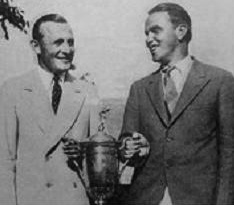
In 1931, still playing with hickory shafts in professional tournaments, George lost to Billy Burke in the first U.S. Open to be broadcast over radio. George was there to witness the future as Billy was the first professional to win using steel shafts. After two successive 36 hole play-offs in a sweltering heat wave at Inverness CC, playing with the new regulation golf ball, Billy prevailed by one stroke on the last hole. It was the longest play-off in US Open history and a PGA record that remains to this day. 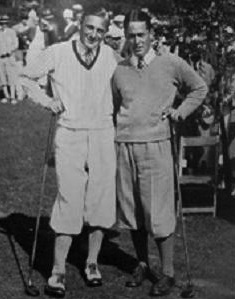
George continued to play professional tournaments closer to home after his 1931 U.S. Open loss winning the 1936 Southern California Open.
In 1950 George left Lakeside Golf Club to pursue a new career. For the first time in his life, he became the head Professional at Hacienda Country Club where he was also Head Greenkeeper. In the 60 years of George Von Elm's life, he won a multiple of golf championship titles as an amateur; as a team player for the United States, Rancho Golf Club and Los Angeles CC; and as a "Business Man Golfer" refusing to be labeled a professional.
By beating Bobby Jones in the 1926 U.S. Amateur Championship, he will always be immortalized, along with his 3 Walker Cup winning teams and many top ten finishes in the British and U.S. Opens, including his famous second place finish in the longest play-off in USGA history against Billy Burke in 1931. |
Copyright 2007-2015 - J.I.B.Jones
Not to be copied or reproduced without the written consent of the Copyright Holder